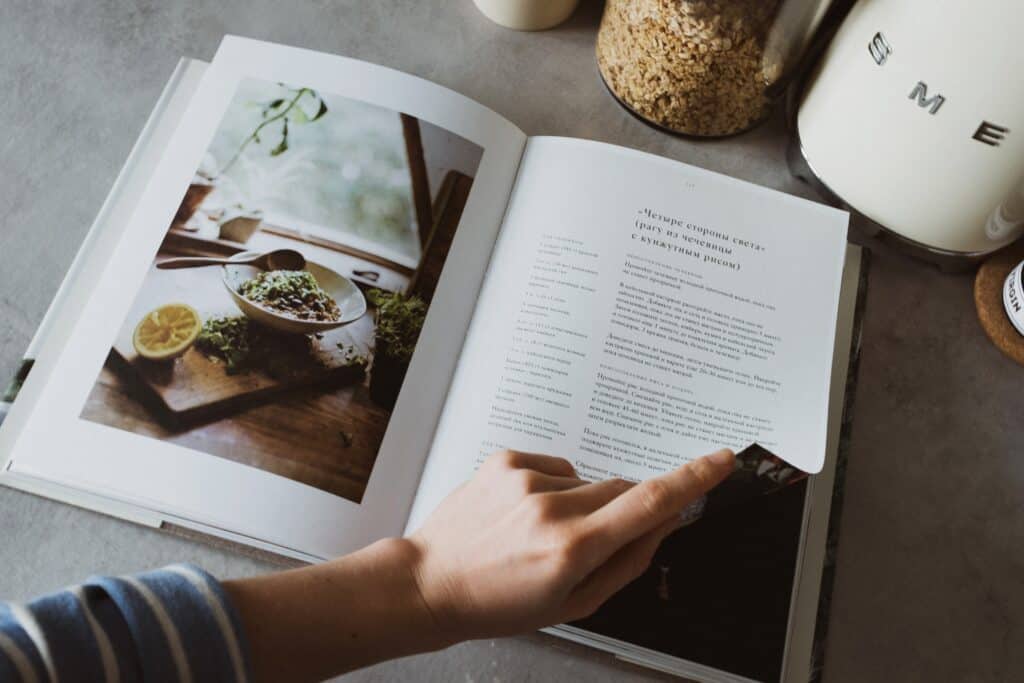
Cookbooks have always been treasured possessions for those who love to cook and experiment in the kitchen. In this digital age, where recipes are just a click away, the allure of a beautifully printed cookbooks remains unmatched. Printing Cookbooks, a Family Cookbook or a Recipe Book are all both useful and profitable products
Whether you’re a passionate home chef looking to share your culinary creations with family and friends, or a professional chef ready to publish your own recipes, understanding the intricacies of printing cookbooks is crucial.
From choosing the right binding method to selecting the perfect paper stock and designing a visually appealing layout, every aspect contributes to the success. If you want to Print Cookbooks, it’s important to do it right.
Printing Cookbooks: An Overview
Before delving into the specifics of printing cookbooks, let’s take a moment to understand the process as a whole.
The Cookbook Printing Process
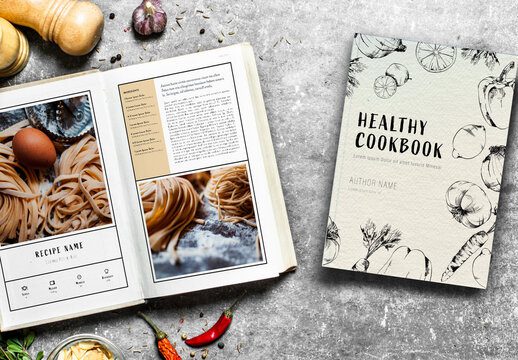
- Content Creation: The first step in publishing your own cookbook is creating the content. This includes writing recipes, taking high-quality photographs of dishes, and possibly adding personal anecdotes or tips.
- Designing Layout: Designing your cookbook’s layout is a critical step. It involves arranging recipes, photos, and any additional text or graphics in an appealing and organized manner.
- Design software like Adobe InDesign, Microsoft Publisher, or Canva can be immensely helpful in this stage.
- Choosing Binding Type: The binding method you choose can significantly impact the look and feel of your cookbook. We’ll explore different binding options in detail later in this article.
- Selecting Paper Stock: The type of paper you choose affects not only the visual appeal but also the durability of your cookbook. For cookbooks, which may encounter spills and stains in the kitchen, paper choice is crucial.
- Printing: Once the design and paper are finalized, it’s time to send your cookbook to the printer. Professional printing services can handle various printing techniques, including offset printing and digital printing.
- Binding: After printing, the individual pages are bound together to create the final cookbook. This is where the choice of binding method becomes essential.
- Finishing Touches: The last step involves adding any finishing touches, such as laminating the cover, adding a dust jacket, or applying special coatings for protection.
Now that we have an overview of the cookbook printing process, let’s dive deeper into the binding options available.
Printing Cookbooks – Binding: Types and Considerations
The choice of binding method for your cookbook is more than just an aesthetic decision; it also influences the book’s functionality, durability, and cost. High Quality Cookbook Printing needs not only a good print house but good print choices.
Here are some common binding options and their advantages and disadvantages when it comes to cookbooks.
1. Printing Cookbooks with Perfect Binding (PUR)
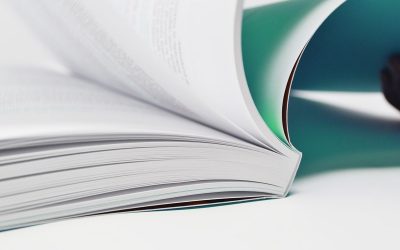
Perfect binding is one of the most common methods used for Printing Cookbooks. In this method, the pages are glued together at the spine, creating a clean and flat edge. Here’s a closer look at the pros and cons:
Advantages of Perfect Bound Books:
- Professional Appearance: Perfect binding gives your cookbook a polished and professional appearance, which make your cookbook suitable for retail and can make the right person the Perfect Gift
- Affordable: It is a cost-effective binding method, making it suitable for small to large print runs.
- Lies Flat: Cooks appreciate that perfect-bound cookbooks can lie flat when open, allowing for easy reading and following of recipes.
Disadvantages of Perfect Binding:
- Durability: While perfect binding looks great, it may not be as durable as some other binding methods, especially if the cookbook is frequently used in the kitchen.
- Page Loss: Over time, pages in perfect-bound books may become loose or detached, potentially leading to lost recipes.
2. Printing Cookbooks with Spiral Binding

Spiral binding involves punching holes along one edge of the pages and threading a plastic or metal spiral coil through them. This allows the cookbook to lay flat and be easily flipped open. Let’s explore the advantages and disadvantages:
Advantages of Spiral Bound Books :
- Durability: Spiral-bound cookbooks are known for their durability, as they can withstand frequent use and even occasional spills.
- Lies Flat: Like a Perfect Bound book, the spiral binding allows the cookbook to lie flat on the countertop while cooking, ensuring that the recipe stays in view.
- Easy Page Removal: If a page becomes stained or damaged, it’s relatively easy to remove and replace it in a spiral-bound cookbook.
Disadvantages of Spiral Binding:
- Less Professional Appearance: The Spiral method may not have the same professional appearance as perfect binding, which can impact how the cookbook is perceived.
- Limited for Retail: It may not be the best choice if you plan to sell your cookbooks in retail stores, as some retailers prefer other binding methods.
3. Printing Cookbooks with Wire-O Binding
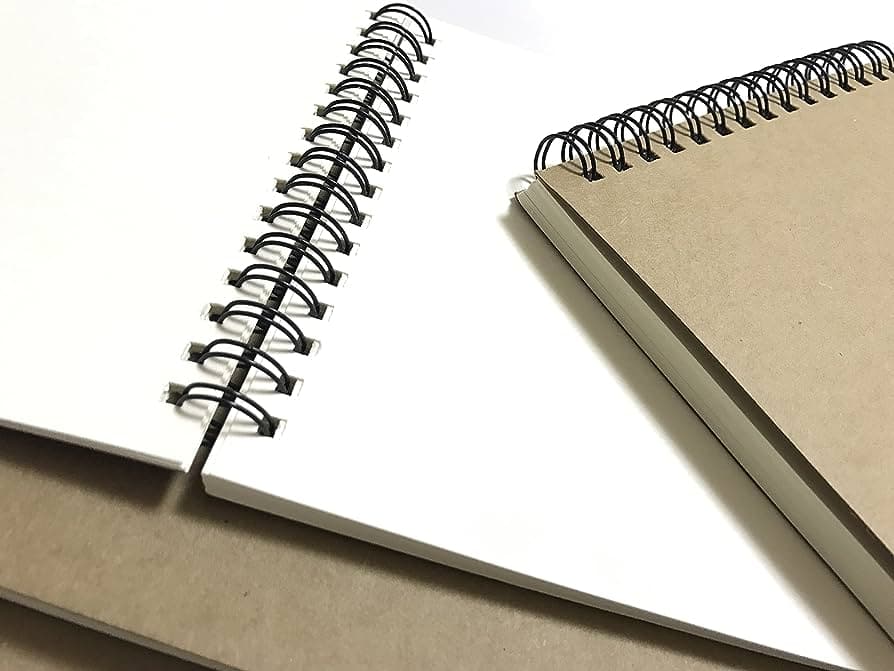
Wire-O binding is similar to a spiral bound book but uses a double-loop wire instead of a coil. This binding method offers its own set of advantages and disadvantages:
Advantages of Wire-O Binding:
- Durability: Wire-O is highly durable, making it suitable for cookbooks that will see heavy use.
- Professional Look: It offers a professional appearance and can be customized with different wire colors to match the cookbook’s design.
- Lies Flat: Like spiral binding, Wire-O allows the cookbook to lie flat for convenient use in the kitchen.
Disadvantages of Wire-O Binding:
- Cost: Wire-O binding can be more expensive than some other binding methods, which may affect the overall cost of producing your cookbook.
- Limited Page Count: Depending on the wire size, Wire-O binding may have limitations on the maximum number of pages your cookbook can have.
4. Printing Cookbooks with Hardcover Binding
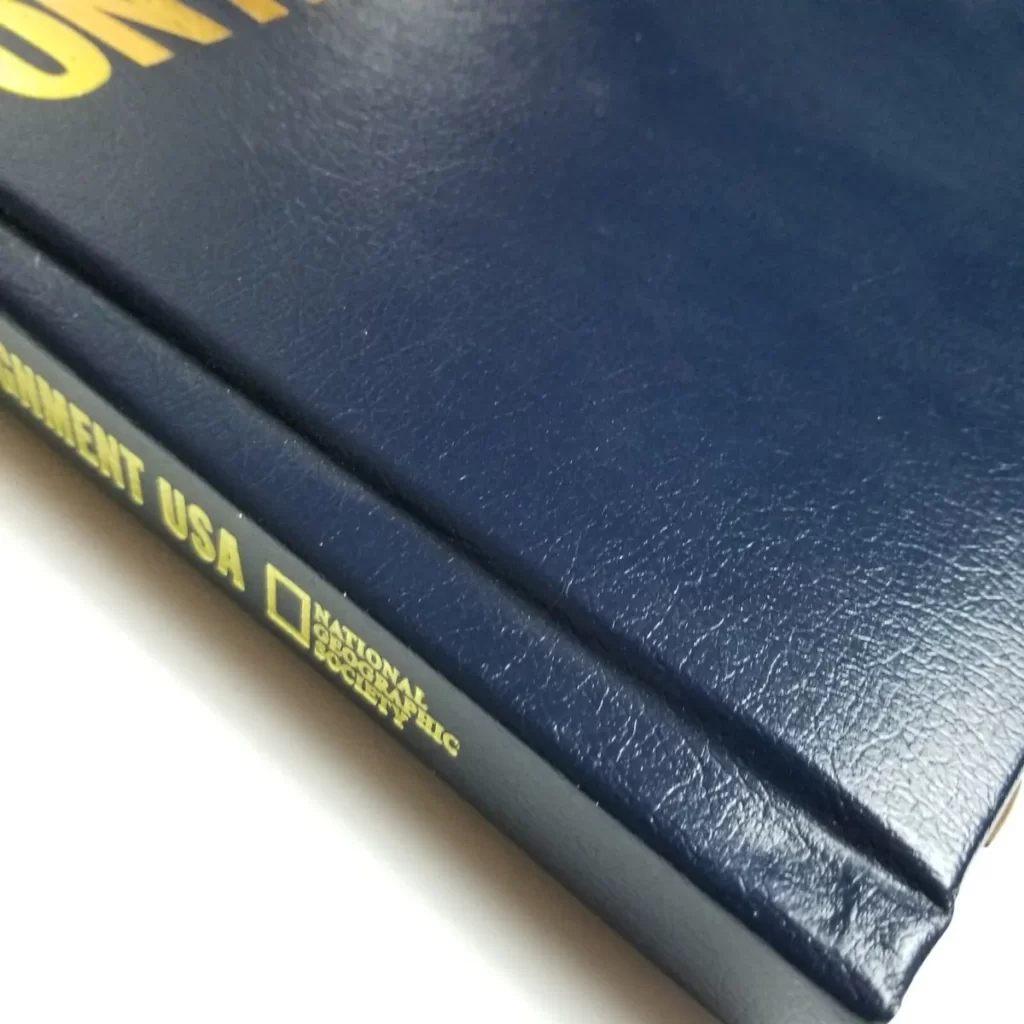
Hardcover binding, also known as case binding, is the most premium and durable option for cookbook printing. It involves sewing or glueing the pages together and attaching a hardcover to protect the book. Let’s examine the pros and cons:
Advantages of having a Hardcover :
- Premium Appearance: Hardcover cookbooks exude elegance and make excellent gifts or collector’s items.
- Durability: They are incredibly durable and can last for generations with proper care.
- Lies Flat: Many hardcover cookbooks are designed to lie flat when open, providing a convenient cooking experience.
Disadvantages of Hardcover Binding:
- Cost: Hardcover binding is the most expensive option due to the premium materials and craftsmanship involved.
- Weight: Hardcover cookbooks can be heavy, making them less portable and potentially less practical for everyday use in the kitchen.
- Limited Flexibility: Unlike perfect binding, hardcover cookbooks may not open as flat, which can be a slight inconvenience for cooks.
When choosing the binding type for your cookbook, consider your target audience, budget, and the intended use of the book. If you’re creating a high-end coffee table cookbook, hardcover binding may be the way to go. However, if you’re producing a practical kitchen companion for everyday cooking, spiral or Wire-O binding could be more suitable.
Selecting the Right Paper Stock when Printing Cookbooks

The paper stock you choose for when you get you Custom Cookbook printed plays a vital role in its overall quality and durability, especially when dealing with potential food stains. Here are some considerations for selecting the right paper stock:
- Weight: Choose a heavier paper stock, typically around 115-150 gsm, to give your cookbook a substantial and durable feel.
- Coating: Consider using a coated paper with a gloss or matte finish. Coated paper is more resistant to moisture and staining, making it a practical choice for cookbooks. Gloss will show your photo files in a better format.
- Laminating: To further protect your cookbook from stains and spills, you can opt to laminate the cover or select a printer that offers varnish options. Laminate typically comes in a Gloss, Matt, or Velvet Soft touch finish
- Sustainability: If eco-friendliness is a concern, look for recycled or FSC-certified paper options.
Printing Cookbooks – Cookbook Design: Tips and Tools
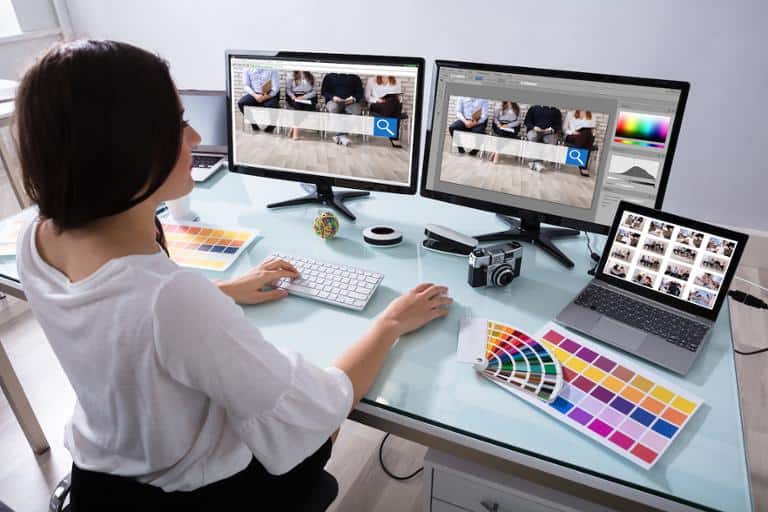
Designing your cookbook is a creative and essential step in the publishing process. Here are some tips and tools to help you create an appealing and user-friendly layout
1. Design Software
Utilize professional design software for laying out your cookbook templates. Adobe InDesign is a popular choice among publishers and designers due to its versatility and robust features. If you’re looking for a more user-friendly option, consider Microsoft Publisher or Canva.
2. Consistent Layout
Maintain a consistent layout throughout your cookbook. Use a grid system to align text and images, choose a readable font, and stick to a cohesive colour palette.
3. High-Quality Imagery
Invest in high-resolution pictures for your recipes. Crisp and vibrant photographs will entice readers to try your dishes. Ensure that your images are properly edited for colour balance and clarity.
4. Organisation
Organise your cookbook logically. Group recipes by categories, such as appetizers, mains, and desserts. Include a table of contents and index for easy navigation.
5. Recipe Format
Standardize your recipe format to make it user-friendly. Include ingredient lists, step-by-step instructions, cooking times, and serving sizes.
6. Testimonials and Stories
Consider adding personal anecdotes, chef’s notes, or testimonials to connect with your readers on a deeper level. Customers love a story !
Inspirational Cookbooks with Outstanding Layouts
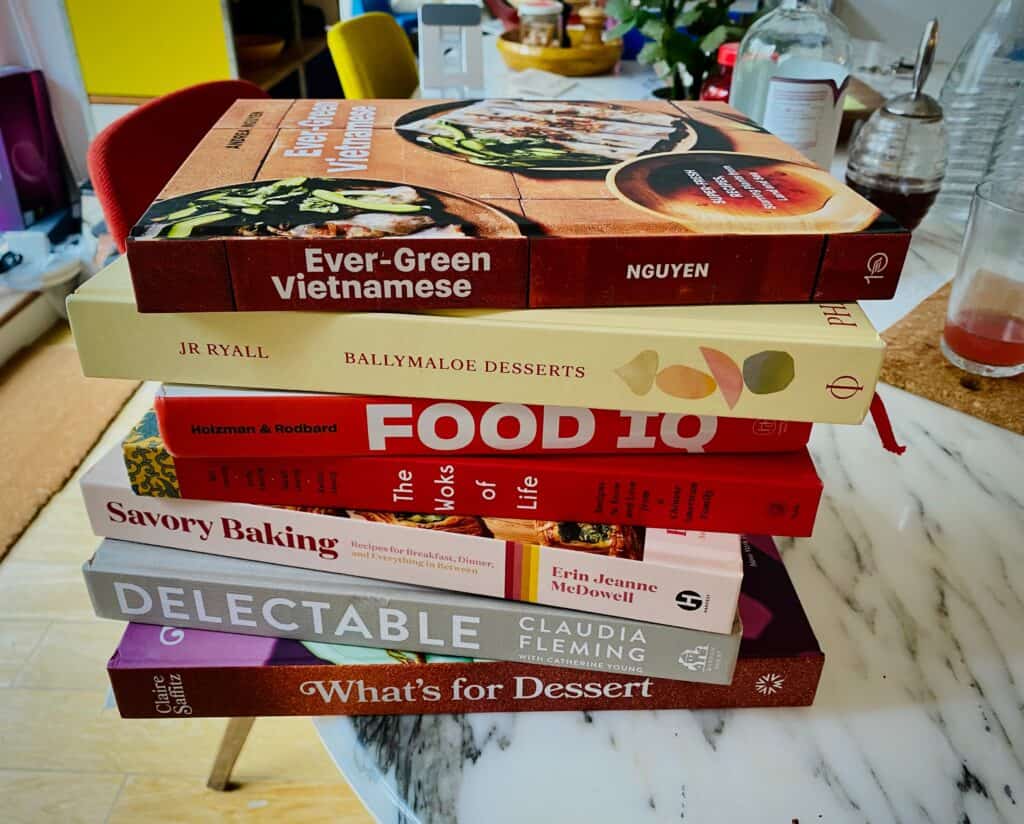
To inspire your cookbook design journey, let’s take a look at some cookbooks that have achieved great success with their layouts and features to get you inspired :
1. “The Joy of Cooking” by Irma S. Rombauer
This timeless classic features a straightforward yet functional layout, with detailed instructions and illustrations for each recipe. The book’s simplicity has been its hallmark for generations.
2. “Plenty” by Yotam Ottolenghi
Plenty” is known for its stunning photography and unique design, which showcases vibrant images of vegetarian dishes. The use of white space and typography creates an elegant, contemporary look.
3. “Salt, Fat, Acid, Heat” by Samin Nosrat
This cookbook cleverly combines Samin Nosrat’s expertise in cooking with Wendy MacNaughton’s delightful illustrations. The visual storytelling adds a playful and educational element to the book.
4. “The Flavor Bible” by Karen Page and Andrew Dornenburg
While not a traditional cookbook, “The Flavor Bible” offers an innovative reference guide for pairing flavours. Its layout is clean and easy to navigate, making it an invaluable resource for chefs.
Printing Cookbooks – It’s not that Easy, but it’s not that Hard Either!
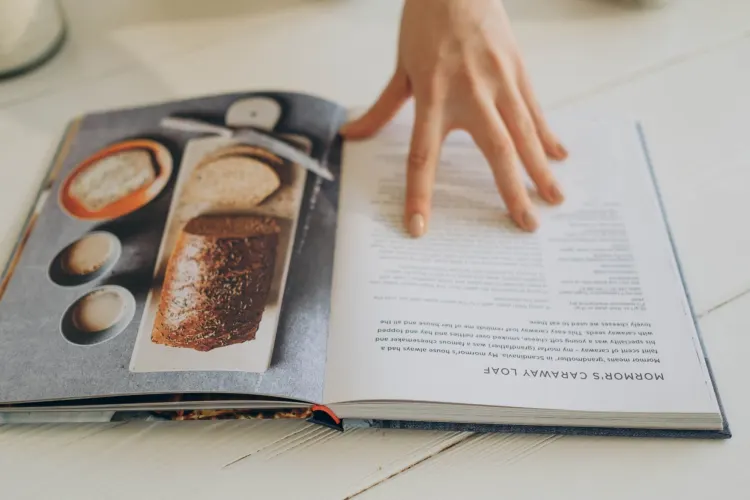
In conclusion, printing cookbooks is a multifaceted process that involves careful consideration of binding methods, paper stock, and design principles.
Your choice of binding should align with the cookbook’s purpose and target audience, while the paper stock should prioritize durability in the face of potential food stains.
Well-designed Recipe Books not only look appealing but also enhance the cooking experience for your readers. By drawing inspiration from successful Recipe Books and utilizing design software effectively, you can create a culinary masterpiece that stands the test of time.
So, go ahead and embark on your own Custom Cookbook publishing journey—your culinary creations deserve to be shared with the world in a beautifully printed format.
And don’t forget to email us your delicious favorite recipes!








